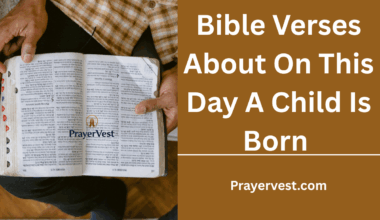The moon’s beauty, mystique, and rhythm in the sky have long captivated people. The moon is more than just a celestial entity in the Bible; it is a symbol that is closely associated with God’s faithfulness, creation, and order. Scripture uses the moon as a reminder of God’s omnipotence over time, seasons, and the natural world throughout Genesis to Revelation.
It bears witness to His promises, marks the passing of days and holidays, and reflects His everlasting presence. We become more aware of how God uses creation to display His splendor and remind His people of His enduring strength when we study Bible scriptures concerning the moon.
In addition to serving as a timekeeper and a seasonal guide, the moon frequently has metaphorical value in the Bible. It is sometimes compared as light in the dark, indicating that God can still give us direction and hope throughout life’s worst times.
As a testament to the majesty of God as Creator, the moon is frequently mentioned by the psalmists and prophets with the sun and stars. Its cycles and consistency also represent God’s faithfulness, unchanging character, and covenant with His people. Therefore, verses about the moon aid in our comprehension of how spiritual truths are reflected in creation.


Examining biblical passages regarding the moon inspires awe and encouragement. Some believe that these verses demonstrate God’s attention to order in creation and His handiwork in the sky. Others see them as symbols of heavenly promises that, like the moon in the night sky, never waver. The moon in Scripture always reminds us of God’s majesty and His concern for the world He created, whether it is in poetry, prophecy, or praise. We might develop a greater sense of awe for the Creator and be reassured that His promises will be faithfully fulfilled, even during our darkest hours, by reflecting on these verses.
40 Inspiring Bible Verses About Moon (2025)
1. Genesis 1:16
“God made two great lights—the greater light to govern the day and the lesser light to govern the night. He also made the stars.”
This verse introduces the moon as the “lesser light” created by God to govern the night. It shows the divine intentionality behind creation, emphasizing that even celestial bodies have a role assigned by the Creator. The moon is not merely a natural phenomenon but part of God’s orderly design, demonstrating His authority over time, light, and seasons.
2. Psalm 8:3
“When I consider your heavens, the work of your fingers, the moon and the stars, which you have set in place…”
The psalmist reflects on the majesty of God’s creation, pointing to the moon and stars as evidence of His craftsmanship. This verse humbles humanity by showing our smallness in contrast to the vast heavens, yet simultaneously magnifies God’s care for us. The moon serves as a reminder of God’s sovereignty and the beauty of His handiwork.
3. Psalm 89:37
“It will be established forever like the moon, the faithful witness in the sky.”
Here, the moon symbolizes constancy and faithfulness, reflecting God’s unchanging covenant promises. Just as the moon’s cycles are reliable, so too is God’s steadfast love and commitment to His people. This imagery connects the physical world to spiritual truths, making the moon a visible sign of divine faithfulness.
4. Joel 2:31
“The sun will be turned to darkness and the moon to blood before the coming of the great and dreadful day of the Lord.”
This prophetic verse uses the moon as a sign of cosmic upheaval and divine judgment. The transformation of the moon into “blood” signals a dramatic event that foreshadows God’s intervention in history. It reminds believers to remain vigilant and prepared for the Day of the Lord, when God will bring justice and renewal.
5. Matthew 24:29
“Immediately after the distress of those days ‘the sun will be darkened, and the moon will not give its light; the stars will fall from the sky, and the heavenly bodies will be shaken.’”
Jesus describes the moon’s darkening as part of end-time signs, symbolizing the collapse of worldly order in preparation for His return. The moon here is more than a celestial object—it becomes part of the divine narrative of history’s climax. It reflects the temporary nature of creation compared to the eternal reign of Christ.
6. Deuteronomy 4:19
“And when you look up to the sky and see the sun, the moon and the stars—all the heavenly array—do not be enticed into bowing down to them and worshiping things the Lord your God has apportioned to all the nations under heaven.”
This verse serves as a caution against idolatry. While the moon is a magnificent part of creation, it was never meant to be worshiped. God commands His people to admire the heavens as His handiwork but to direct their devotion to Him alone. The moon points us back to the Creator, not to itself as an object of divinity.
7. Psalm 104:19
“He made the moon to mark the seasons, and the sun knows when to go down.”
Here, the psalmist highlights the moon’s practical role in God’s design, marking time and seasons. This verse underscores how God uses creation to bring rhythm and order to human life. The moon is not random; it is purposefully placed to serve humanity and reflect the Creator’s wisdom in organizing the world.
8. Isaiah 30:26
“The moon will shine like the sun, and the sunlight will be seven times brighter, like the light of seven full days, when the Lord binds up the bruises of his people and heals the wounds he inflicted.”
In this prophetic vision, the moon symbolizes restoration and healing. Its brightness surpasses natural expectation, pointing to a future where God brings wholeness to His people. The moon here becomes a metaphor for God’s promise to transform pain into light and suffering into glory.
9. Jeremiah 31:35
“This is what the Lord says, he who appoints the sun to shine by day, who decrees the moon and stars to shine by night, who stirs up the sea so that its waves roar—the Lord Almighty is his name.”
Jeremiah points to the moon and stars as evidence of God’s power and authority. Just as the moon reliably shines by night, so God’s promises are steadfast. This verse reassures us that the natural order reflects the unchanging character of God, who governs creation with sovereignty.
10. Revelation 21:23
“The city does not need the sun or the moon to shine on it, for the glory of God gives it light, and the Lamb is its lamp.”
In the vision of the New Jerusalem, the moon’s light is no longer needed because God’s glory outshines everything. This verse highlights the ultimate fulfillment of creation’s purpose—when God Himself becomes the eternal light for His people. The moon here serves as a contrast, reminding us that all earthly lights pale in comparison to the radiance of God’s presence.
11. Job 25:5
“If even the moon is not bright and the stars are not pure in his eyes…”
This verse from Bildad emphasizes the holiness and perfection of God compared to creation. Even the moon, which appears radiant to us, falls short of God’s glory. It serves as a reminder that nothing in creation, no matter how beautiful, can compare with the purity of the Creator.
12. Song of Solomon 6:10
“Who is this that appears like the dawn, fair as the moon, bright as the sun, majestic as the stars in procession?”
The moon here is used as a metaphor for beauty and radiance, describing the beloved’s charm and splendor. This verse highlights how the moon, with its gentle glow, has long been associated with elegance and attraction. Spiritually, it can also symbolize the beauty of God’s people reflecting His light in the world.
13. Psalm 72:7
“In his days may the righteous flourish and prosperity abound till the moon is no more.”
This psalm of Solomon connects the moon with enduring righteousness and peace. The phrase “till the moon is no more” underscores the lasting reign of God’s chosen king, foreshadowing the eternal reign of Christ. The moon symbolizes continuity and the long-lasting blessings of God’s kingdom.
14. Isaiah 13:10
“The stars of heaven and their constellations will not show their light. The rising sun will be darkened and the moon will not give its light.”
Isaiah uses the darkening of the moon as imagery for judgment. This cosmic disturbance signifies the seriousness of God’s intervention against sin. The moon, normally a constant in the night sky, being darkened, reflects the collapse of human security when God executes justice.
15. Psalm 136:9
“The moon and stars to govern the night; His love endures forever.”
This psalm of thanksgiving ties the moon to God’s enduring love. The moon’s role in governing the night becomes a symbol of God’s continuous care and order over creation. Each night that the moon shines serves as a testimony to God’s faithful love toward humanity.
16. Joel 3:15
“The sun and moon will be darkened, and the stars no longer shine.”
Joel uses the imagery of a darkened moon as part of apocalyptic prophecy. The moon becomes a sign of cosmic upheaval when God moves in judgment. This imagery warns humanity of God’s power while urging His people to repentance and hope in His salvation.
17. Habakkuk 3:11
“Sun and moon stood still in the heavens at the glint of your flying arrows, at the lightning of your flashing spear.”
This poetic description recalls God’s mighty acts of deliverance, likening cosmic events to His power in battle. The moon standing still symbolizes divine intervention beyond natural laws. It reminds us that creation itself responds to the will of the Almighty.
18. Psalm 121:6
“The sun will not harm you by day, nor the moon by night.”
This beloved psalm assures believers of God’s constant protection. The moon here symbolizes the dangers or fears of the night, yet God promises safety and peace. It highlights God as the ultimate source of security, both in the brightness of day and the stillness of night.
19. Joshua 10:13
“So the sun stood still, and the moon stopped, till the nation avenged itself on its enemies…”
This miraculous event demonstrates God’s authority over the cosmos. The moon stopping in its course allowed Israel victory in battle, showing that God can alter the natural order to fulfill His purposes. It is a powerful reminder of God’s sovereignty over time and creation.
20. Revelation 6:12
“I watched as he opened the sixth seal. There was a great earthquake. The sun turned black like sackcloth made of goat hair, the whole moon turned blood red.”
This dramatic vision connects the moon with end-time events. Its transformation into blood-red serves as a sign of coming judgment and cosmic upheaval. The imagery reveals how even the heavens will reflect the seriousness of God’s final plan of redemption and justice.
21. Nehemiah 9:6
“You alone are the Lord. You made the heavens, even the highest heavens, and all their starry host, the earth and all that is on it, the seas and all that is in them. You give life to everything, and the multitudes of heaven worship you.”
Though not naming the moon directly, this verse includes it as part of the “starry host” created and sustained by God. The moon here is acknowledged as part of the vastness of God’s creation, which exists not for self-glory but to reflect His majesty and inspire worship.
22. 1 Corinthians 15:41
“The sun has one kind of splendor, the moon another and the stars another; and star differs from star in splendor.”
Paul draws a comparison between heavenly bodies and the resurrection body. The moon’s distinct brightness represents diversity and uniqueness in God’s design. Just as the moon differs from the sun and stars, so too will the resurrected bodies of believers reflect a unique glory given by God.
23. Deuteronomy 33:14
“With the best the sun brings forth and the finest the moon can yield.”
Here, the moon is linked to blessing and fruitfulness. It reflects God’s provision, symbolizing abundance that comes from creation. The moon’s cycles influence agriculture, marking times for planting and harvest, showing God’s care through both natural and spiritual sustenance.
24. Isaiah 24:23
“The moon will be dismayed, the sun ashamed; for the Lord Almighty will reign on Mount Zion and in Jerusalem, and before its elders—with great glory.”
This verse presents the moon as humbled before the glory of God. Though the moon shines brightly in the night, it pales in comparison to the radiance of the Lord. The imagery highlights God’s supreme reign, surpassing all natural lights and powers.
25. Jeremiah 33:20
“This is what the Lord says: ‘If you can break my covenant with the day and my covenant with the night, so that day and night no longer come at their appointed time…’”
Though not naming the moon explicitly, the verse implies its role in marking night. God uses the certainty of day and night—sustained by the sun and moon—to illustrate the unbreakable nature of His covenant with Israel. The moon becomes a symbol of permanence and reliability in God’s promises.
26. Matthew 27:45
“From noon until three in the afternoon darkness came over all the land.”
While the moon is not directly named here, this supernatural darkness at Christ’s crucifixion may have involved a lunar eclipse. The imagery connects the moon and the heavens with God’s dramatic intervention at the death of Jesus, symbolizing judgment, mourning, and redemption.
27. Psalm 81:3
“Sound the ram’s horn at the New Moon, and when the moon is full, on the day of our festival.”
The moon’s phases were tied to Israel’s worship calendar. Festivals and holy days were often marked by the new moon or full moon, showing how God used the lunar cycle to structure times of celebration and remembrance. The moon thus guided worship and communal life.
28. 2 Kings 23:5
“He did away with the idolatrous priests appointed by the kings of Judah to burn incense on the high places of the towns of Judah and on those around Jerusalem—those who burned incense to Baal, to the sun and moon, to the constellations and to all the starry hosts.”
This verse shows how the moon was wrongly worshiped by some in ancient Israel. King Josiah’s reforms abolished such idolatry, restoring true worship to God alone. It reminds us that the moon, though majestic, is created and not worthy of adoration.
29. Ecclesiastes 12:2
“Before the sun and the light and the moon and the stars grow dark, and the clouds return after the rain…”
The moon here is part of poetic imagery describing aging and the frailty of life. Just as the moon eventually fades from view, human strength and vitality diminish with time. The verse encourages humility and reverence for God before life’s end.
30. Revelation 12:1
“A great sign appeared in heaven: a woman clothed with the sun, with the moon under her feet and a crown of twelve stars on her head.”
In this apocalyptic vision, the moon symbolizes dominion and authority under the woman’s feet. The imagery is rich with symbolism, often interpreted as representing Israel or the Church. The moon reflects God’s plan unfolding in history, with cosmic signs pointing to His sovereignty.
31. Isaiah 60:19
“The sun will no more be your light by day, nor will the brightness of the moon shine on you, for the Lord will be your everlasting light, and your God will be your glory.”
This verse shifts the focus from natural lights to the eternal light of God. The moon, though radiant, is temporary compared to the everlasting presence of the Lord. It reminds believers that in eternity, God Himself will provide light and glory beyond anything creation can offer.
32. Amos 8:9
“In that day,” declares the Sovereign Lord, “I will make the sun go down at noon and darken the earth in broad daylight.”
Though the moon is not named directly, this prophecy of sudden darkness reflects God’s control over both sun and moon. When natural lights fail, it signifies divine judgment. This verse reinforces the theme that God’s authority extends over the cosmos, including the moon.
33. Judges 5:20
“From the heavens the stars fought, from their courses they fought against Sisera.”
The poetic song of Deborah describes celestial bodies, including the moon, as participating in God’s victory. It symbolizes that creation itself responds to God’s command. The moon here represents God’s involvement in battles, reminding us that nothing in creation is outside His power.
34. Isaiah 34:4
“All the stars in the sky will be dissolved and the heavens rolled up like a scroll; all the starry host will fall like withered leaves from the vine, like shriveled figs from the fig tree.”
Though the moon is not explicitly named, it is implied as part of the heavenly host. This apocalyptic imagery emphasizes the temporary nature of creation. The moon, like all other celestial bodies, will fade when God brings forth His final judgment and renewal of all things.
35. Luke 21:25
“There will be signs in the sun, moon and stars. On the earth, nations will be in anguish and perplexity at the roaring and tossing of the sea.”
Jesus speaks of the moon as part of end-time signs that will stir fear and awe. These cosmic events are not random but are signals of God’s unfolding plan. The moon thus becomes a prophetic marker, urging people to remain watchful and faithful.
36. Ezekiel 32:7
“When I snuff you out, I will cover the heavens and darken their stars; I will cover the sun with a cloud, and the moon will not give its light.”
Here, the darkening of the moon represents judgment against nations. God uses cosmic imagery to illustrate His power over kings and kingdoms. The moon’s light, usually steady, being removed symbolizes the downfall of earthly powers when God acts in justice.
37. Joel 2:10
“Before them the earth shakes, the heavens tremble, the sun and moon are darkened, and the stars no longer shine.”
This prophecy uses the moon’s darkening as a sign of terror and awe during God’s day of judgment. The trembling of creation reflects the seriousness of God’s coming. The moon here is part of a larger cosmic testimony that all creation acknowledges God’s authority.
38. 2 Chronicles 8:13
“According to the daily requirement for offerings commanded by Moses for the Sabbaths, the New Moons and the three annual festivals—the Festival of Unleavened Bread, the Festival of Weeks and the Festival of Tabernacles.”
The moon’s phases played a central role in Israel’s worship calendar. This verse shows how new moons marked times of sacrifice and devotion. It emphasizes the connection between God’s creation and His people’s rhythms of worship.
39. Psalm 148:3
“Praise him, sun and moon; praise him, all you shining stars.”
Here, the psalmist calls on the moon itself to praise the Creator. This poetic command highlights that even celestial bodies exist to glorify God. The moon becomes a symbol of worship, reminding us that all creation reflects praise to its Maker.
40. Revelation 8:12
“The fourth angel sounded his trumpet, and a third of the sun was struck, a third of the moon, and a third of the stars, so that a third of them turned dark. A third of the day was without light, and also a third of the night.”
This apocalyptic vision shows the moon as part of God’s judgment on creation. Its dimming represents partial disruption of the natural order, pointing to the seriousness of divine wrath. The moon here underscores how even cosmic bodies are subject to God’s sovereign plan.
Conclusion
Finally, Bible passages about the moon serve as a reminder that God’s majesty, might, and order are demonstrated by creation itself. In addition to being a marvel of nature, the moon is a divine indicator of the seasons, holidays, and passage of time. Its constant existence in the night sky serves as a constant reminder of God’s promises and a reflection of His faithfulness. The moon consistently reminds us of the magnificence of the Creator who placed it, whether it is employed symbolically in Revelation, lyrically in Psalms, or prophetically in the works of Isaiah and Joel.
In the end, reflecting on these verses enables us to perceive the moon as more than just a far-off light; rather, it represents God’s direction, His steadfastness, and His covenant love for His people. We are asked to live lives that reflect the light of God’s grandeur, just as the moon reflects the light of the sun. We are reminded to put our faith in the One in charge of the cosmos and to abide by His promises, which shine as steadily in the night sky as the moon, by gazing up at the heavens, including the moon.






